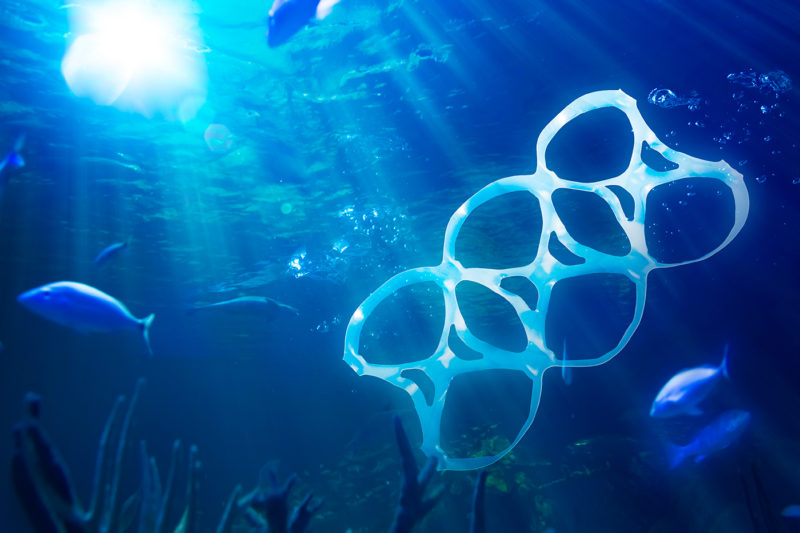Tackling the problem of ocean plastics

Plastics pollution is one of the greatest threats to marine habitats. An estimated 250 metric tons of microplastics—the remnants of water bottles and other plastic consumer goods—float in the world’s oceans. Taking research vessels out to study these particles and their dispersion patterns can be expensive and time-consuming. To change that, Northeastern marine-science student Ethan Edson worked with CSI professor Mark Patterson to invent a device to quickly collect and categorize microplastics.
Microplastics—shards that are each less than 5 millimeters long—degrade water quality, kill fish that consume them, and could potentially harm humans who ingest them via water or fish. Edson’s innovation, a sleek device called MantaRay, pumps seawater through its midsection, identifies microplastic particles, and sorts and stores them in filters. It includes GPS and sensors to track where the plastics are collected and the water temperature and salinity.
Edson’s prototype won a prestigious research prize at Northeastern, but he wanted to improve it and make it available to everyone, from seafood companies to environmental agencies. The Schmidt Family Foundation stepped in to help. Since 2016, the foundation has awarded Northeastern more than $250,000 to perfect and commercialize the prototype. Founded by tech executive Eric Schmidt and his wife, Wendy, the foundation advances the wiser use of energy and natural resources, and empowers communities to build resilient systems. Patterson and Edson also received business guidance and mentorship from professor Marc Meyer, an entrepreneurship expert based at Northeastern’s D’Amore-McKim School of Business.
Because of these partnerships, the MantaRay is slated to be on the market in 2019; it now includes advanced features like a satellite-based system that enables researchers to track microplastic amounts and patterns remotely for months, from anywhere on Earth.
“The MantaRay is an example of what great collaborations can create. We couldn’t have gotten the device to where it is today without help from the Schmidts or the entrepreneurial ecosystem at Northeastern,” Patterson says.
Author: CSI Staff